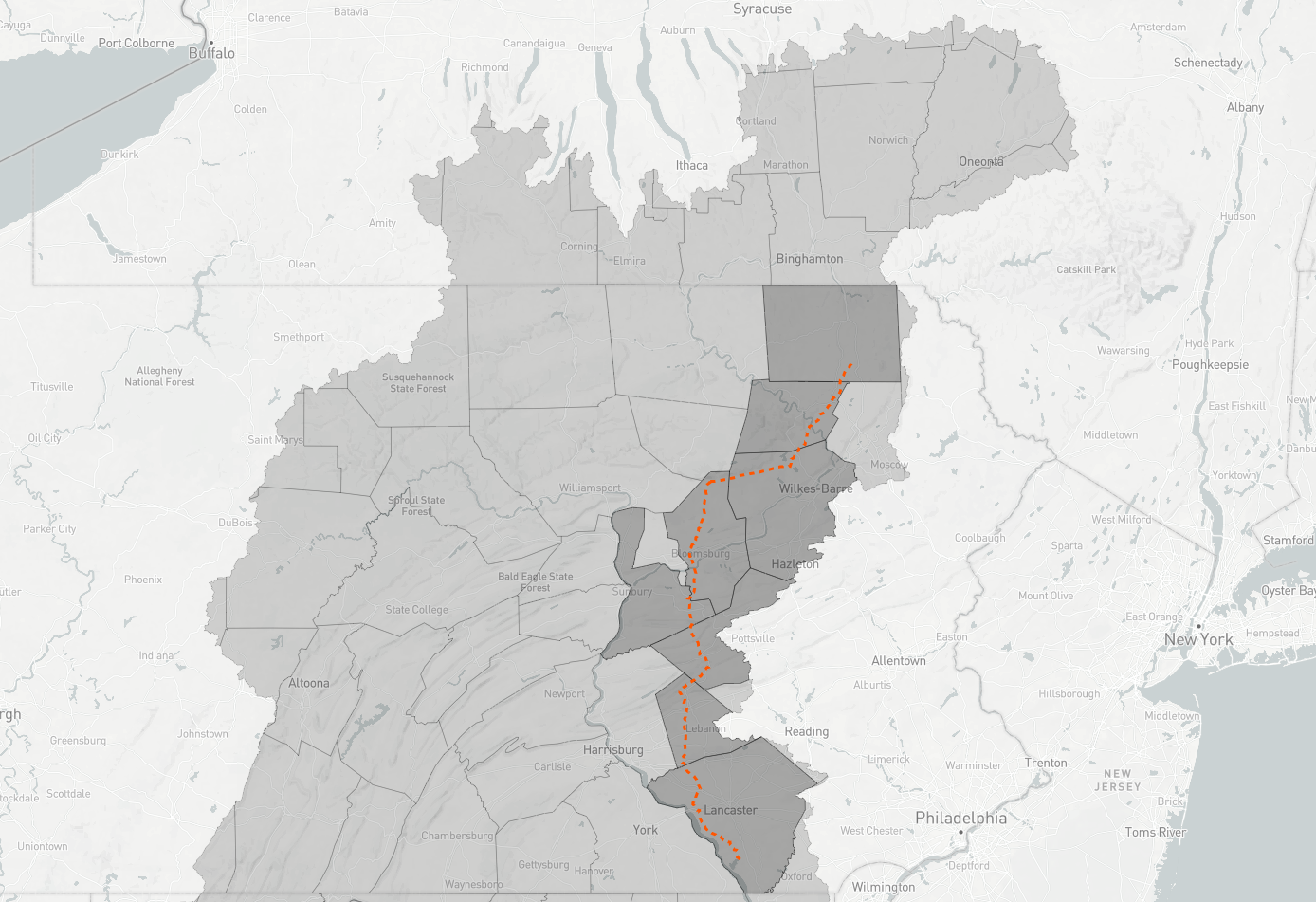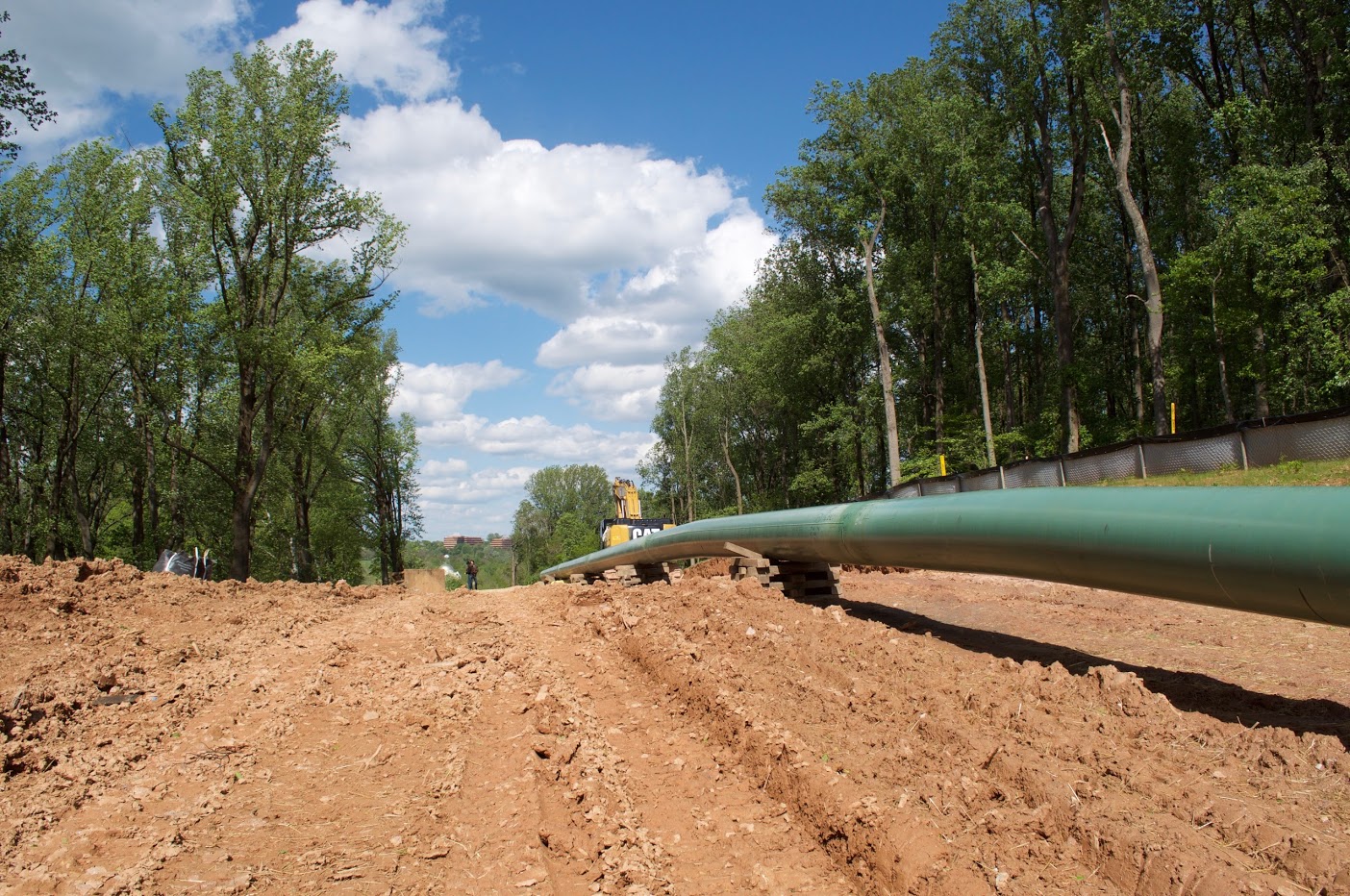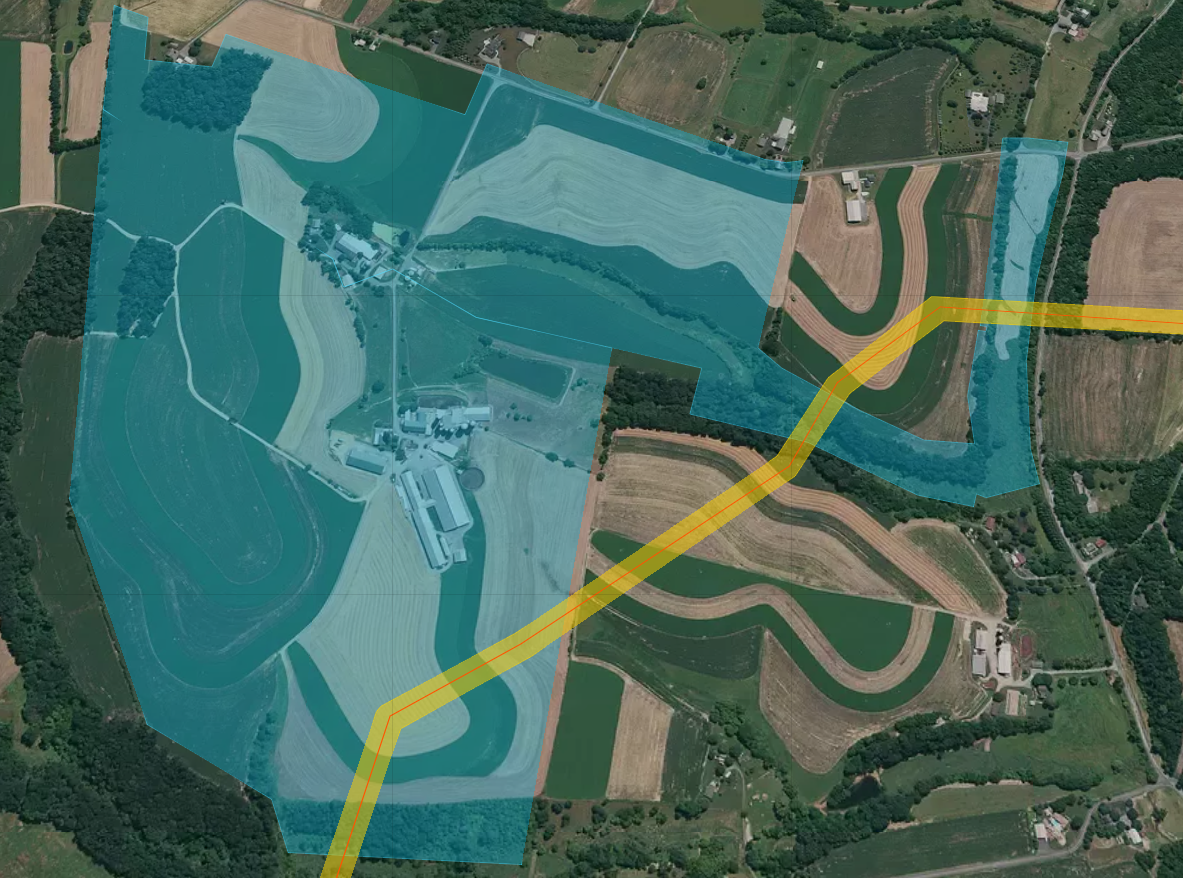Easement to Industry
| | | | |
Mapping the proposed path
of the Atlantic Sunrise Pipeline
About the Atlantic Sunrise Project
Williams’ Atlantic Sunrise Project will require laying approximately 194 miles of new greenfield pipe through the heart of Pennsylvania, permanently impacting hundreds of acres of sensitive areas within the Chesapeake Bay watershed. This pipeline is just one of at least nine major pipelines proposed for the Bay watershed. To power the pipeline, Williams proposes to build two new compressor facilities in Pennsylvania, and other facility additions or modifications in Pennsylvania, Maryland, Virginia, North Carolina, and South Carolina. The project will also consist of two pipeline loops totaling about 12 miles (called the Chapman Loop and the Unity Loop), and two and a half miles of existing pipeline replacement.
Williams currently operates a natural gas transmission line known as the Transco Pipeline. Transco moves natural gas from production areas to utility companies and power plants located across the eastern United states. Expanding upon the already massive 10,200 miles of Transco’s pipeline, Atlantic Sunrise would add an additional 1.7 million dekatherms per day of capacity to the system. The project would consist of compression and looping of the Transco Leidy Line in Pennsylvania along with the greenfield pipeline segment, referred to as the Central Penn Line, which will connect the northeastern Marcellus producing region to the Transco mainline in southeastern Pennsylvania.
This capacity will allow the company to export additional gas through Dominion Cove Point’s liquefied natural gas export facility, which is now under construction despite legal challenges. The facility, located on the Chesapeake Bay in southern Maryland, would be the first LNG export terminal on the East Coast, linking the fracking fields of Pennsylvania, West Virginia, and Ohio to Asian markets. Transco connects to Dominion Cove Point’s pipeline in Fairfax County, Virginia.
Central Penn Line North and South
The proposed Central Penn Line North and Central Penn Line South would stretch 183 miles from Susquehanna County to Lancaster County, Pennsylvania. Construction of the new pipeline will require a 125-foot right of way (ROW). Among other impacts, the construction path will cross a total of 52 areas designated as “protected lands.” Protected lands are defined as lands that are
“permanently protected from development . . . for their cultural, historical, ecological or agricultural value.” - Chesapeake Bay Program
The construction of this pipeline will permanently impact these high-value lands that are supposed to remain untouched and set back progress towards protecting the Chesapeake Bay.

The Environmental Protection Agency’s Chesapeake Bay Program is tasked with overseeing the cleanup of the Chesapeake Bay by 2025. Part of its strategy to achieve this goal is to permanently protect from development land that is identified as a high-conservation priority at the federal, state or local level. These lands protect water quality, sustain fish and wildlife, maintain working farms and forests, preserve our history, and provide opportunities for outdoor recreation.

The northern third of the proposed path consists of intersections with state lands and one federally protected land. Moving south along the proposed path, protected land intersections in Lebanon, Dauphin, and Lancaster counties reveal many parcels that are privately owned agricultural easements.

Of particular concern are the multiple agricultural easements the pipeline will cross in Lancaster County. These easements often represent years of work toward acquisition and permanent protection. The many smaller parcels intersected by the lower third of the proposed pipeline were deliberately set aside by landowners and conservationists with the intention that they remain permanently protected. Indeed, the definition of protected lands is lands that are “permanently protected from development.”
Explore the Protected Lands at Risk
The following map provides a detailed overview of each protected land intersected by Central Penn Line North and South’s proposed construction path. Scroll through the information banner on the right to move the map to areas at risk to learn more.
Analytical Methods and Data Sources
Calculating the total of protected land acreage intersected by an area of interest such as a pipeline right of way, can be achieved in many different ways using open source geographic information systems such as GDAL and QGIS or proprietary software such as ArcGIS for Desktop. The analysis team took the following steps to identify protected lands intersected by the proposed path, and generate a conservative “acreage affected” that falls within the proposed pipeline right of way.
- Acquired proposed Central Penn Line North and South pipeline path and the Chesapeake Bay Program Protected Lands Dataset.
- Projected proposed Central Penn Line North and South pipeline path and the Chesapeake Bay Program Protected Lands Dataset to NAD 1983 State Plane Pennsylvania North and Pennsylvania South (Feet) coordinate system.
- Buffer Central Penn Line North and South pipeline path to the respective feet of the proposed right of way.
- Select all Chesapeake Bay Program Protected Lands that intersect the buffered Central Penn Line North and South pipeline path right of way.
- Clip Chesapeake Bay Program Protected Lands to buffered Central Penn Line North and South pipeline path right of way.
- Calculate geometry (area in acres) of land falling within the buffered Central Penn Line North and South pipeline path right of way.
- Run summary statistics on types of lands falling within the Central Penn Line North and South pipeline path right of way.
The following data produced for this analysis and visualization can be accessed via the download button below. Our analytical team have provided all assets in a .shp file and .geojson format for use in other mapping applications. For those seeking the source of these assets, refer to the next section, Partners and Source Data. Please note that for visualization in our web maps, we re-projected all assets to WGS84.
Policy analysis was provided by our project partners at Chesapeake Climate Action Network. The Chesapeake Climate Action Network (CCAN) is the first grassroots, nonprofit organization dedicated exclusively to fighting global warming in Maryland, Virginia, and Washington, D.C.

Chesapeake Commons aided the project partners in geo-spatial analysis, design, and development of the Easement to Industry site. The Commons partners with individuals and organizations to access, organize and share data to drive policy and inspire action that protects the environment.

The Chesapeake Legal Alliance (CLA) provided input to the project partners on the funding proposal for this project and will support them with legal counsel. CLA and its network of volunteer attorneys provide pro bono legal assistance, to those working to protect and restore the Chesapeake Bay, including its watershed

Fractracker Alliance played an instrumental role in digitizing the path of the Atlantic Sunrise Project’s Central Penn North and South proposed pipeline. Fractracker Alliance studies, maps, and communicates the risks of oil and gas development to protect our planet and support the renewable energy transformation.
Follow the links below to access the source data or contact the project partners.